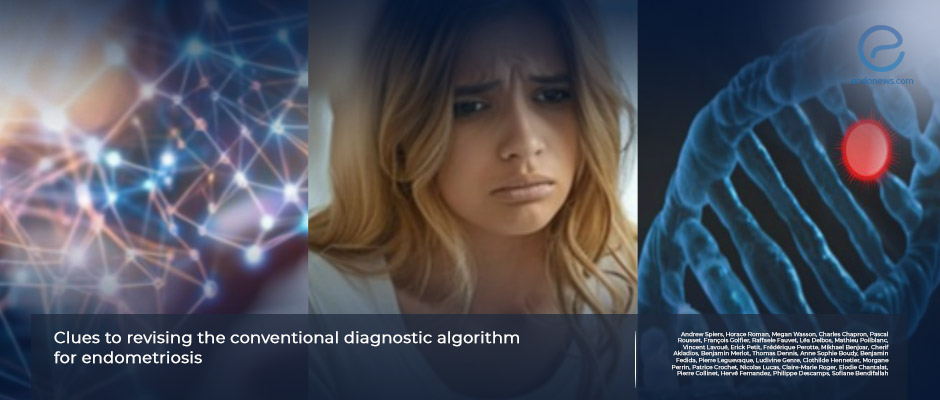Knowledge synthesis of the "Relevance of Endometriosis Diagnostic Tools"
Oct 30, 2024
Significance of Anamnesis: Need for improved endometriosis diagnostic algorithms in light of emerging techniques.
Key Points
Importance:
- A key limitation of existing diagnostic methods for endometriosis is the absence of reliable biological markers.
Highlights:
- Endometriosis diagnosis relies on anamnesis, clinical examination, imaging techniques, yet there is a critical need to enhance both genetic insights and biomarker development for the disease.
What's done here:
- An author group from France made a systematic review from Medline and Cochrane Library databases for 2021-2023 to evaluate the diagnostic relevance and performance of various tools for endometriosis.
- The GRADE and QUADAS-2 frameworks were employed to assess included studies.
- Approach was based on five criteria: study design, methodological quality, directness of evidence, precision of effect estimates, and risk of publication bias.
Key Results:
- Out of 4,204 articles reviewed, 26 met the inclusion criteria.
- While anamnesis and clinical examination provide some diagnostic insight, their evidence levels are limited.
- Imaging techniques, particularly magnetic resonance imaging, show higher sensitivity than ultrasound, yet issues remain regarding terminology and accuracy.
- Patients share information and anamnesis is important. Clinical examination remains valuable when accepted by the patient and feasible, particularly for assessing vaginal and retrocervical endometriosis.
- Promising advances in biomarkers, particularly noncoding RNAs and saliva microRNA signatures, suggest potential revisions to traditional diagnostic algorithms, indicating a need for continued improvement in diagnostic strategies for endometriosis.
Lay Summary
The research team, comprising 30 authors, conducted a thorough literature search using a rapid strategy and specific selection criteria. The review focused on retrospective and prospective observational studies, as well as randomized clinical trials that reported the accuracy of diagnostic tools. Ultimately, 26 relevant articles were selected by consensus among at least two authors. Each study was assessed using the GRADE approach, evaluating five criteria: study design, methodological quality, directness of evidence, precision of effect estimates, and risk of publication bias. A detailed evaluation was also performed using the QUADAS-2 classification.
The findings indicate that no tool significantly reduces the diagnostic timeline for endometriosis based solely on anamnesis. Additionally, clinical symptoms and magnetic resonance imaging (MRI) alone do not effectively differentiate between patients with and without the condition.
For diagnosing deep infiltrative endometriosis, a combination of pelvic manual examination, transvaginal ultrasonography (TVUS), and MRI provides greater accuracy than any single method. Notably, a negative TVUS does not reliably rule out the disease or replace diagnostic laparoscopy, while TVUS, if positive, can assist in the noninvasive diagnosis of superficial endometriosis.
The 2017 CNGOF and 2024 ESHRE guidelines emphasize that biomarker measurements should not be employed for diagnosing endometriosis, reflecting their limited clinical utility. However, the authors highlighted the potential of noncoding RNAs in various biofluids as valuable diagnostic markers. They advocate for the inclusion of the saliva miRNA signature for endometriosis in diagnostic algorithms, noting its cost-effectiveness compared to imaging methods, except in cases of endometrioma and colorectal endometriosis.
Research Source: https://pubmed.ncbi.nlm.nih.gov/39161277/
biomarkers clinical examination pelvic pain infertility ultrasonography magnetic resonance imagination endometriosis.

